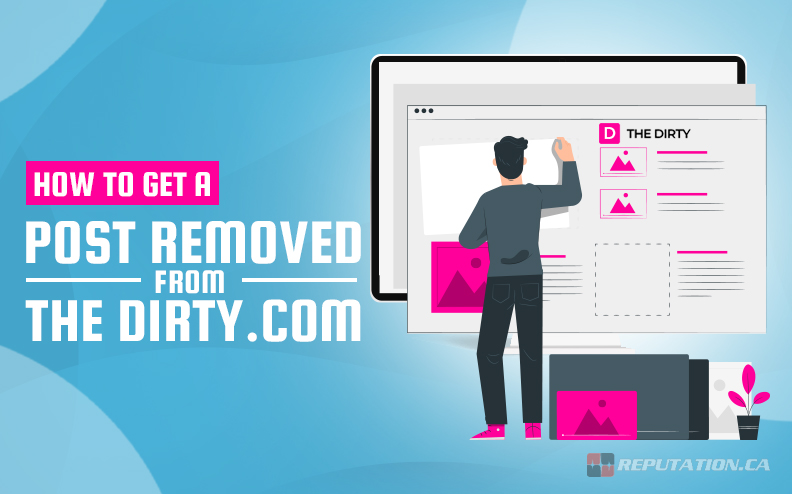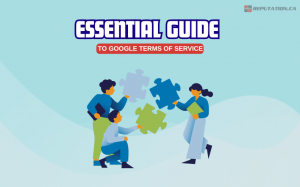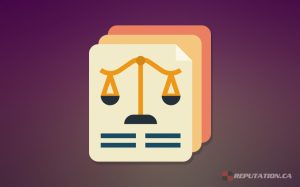Curiosity is always a double-edged sword. Sometimes you want to learn something, and it leads you down a rabbit hole and you lose hours of your day. Sometimes that’s the best outcome. Searching for yourself online has the potential to reveal information you didn’t know was out there and can lead to a lot of stress depending on the kind of information.
In particular, one major offender is The Dirty. The Dirty is a gossip site, sort of like a TMZ with lower standards and a focus on the average person rather than just celebrities. As such, its pages are full of ranting posts about people you’ve probably never heard of. Posts on the site typically attempt to slander men and shame women and have zero fact-checking involved. Anyone can submit an anonymous story to the site, and many of them end up published.
If your name comes up on this site, it’s no small source of stress and anguish. Regardless of the truth or falsehood of the story, you’ll want to get it removed, but can you? The process is possible, but tricky, and may require significant expense.
How The Dirty Operates
The Dirty serves primarily as a gossip and shaming site, claiming to bring truth to the masses while publishing anything it feels like without regard for facts. They hide behind complicated legal structures and a high barrier to removal, to make it more trouble than it’s worth to remove the posts on the site. Here’s what they say.
- You can’t sue them for the posts they publish. This has to do with Section 230 of the Communications Decency Act.
- A post can only be removed with a court order or for violations of the site terms of service. The terms of service are essentially limited to child porn, revenge porn, images of minors, and personal financial information, most of which is generally not published anyway.
- You can only get the name and IP address of the person who submitted a story (in order to sue them) if you have a subpoena.
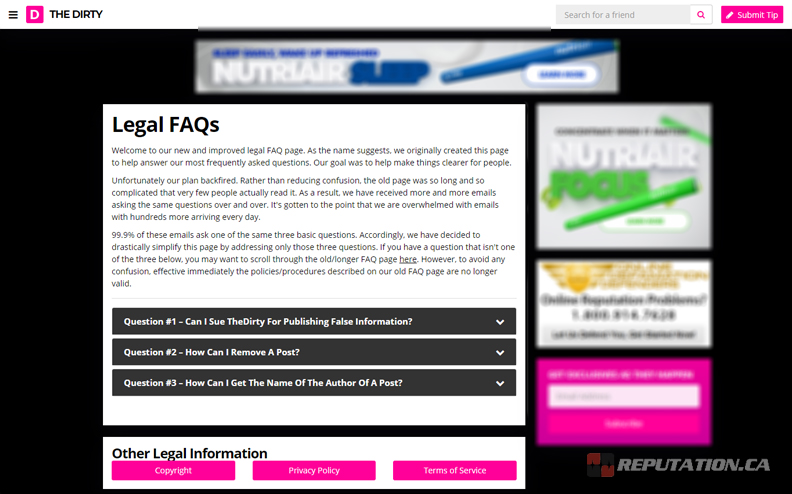
All of this is couched in legal language and is worded to be as scary and intimidating as possible, to dissuade you from pursuing action against them. While what they have to say is true, there’s more nuance and flexibility to it than they would like you to know. The Dirty also warns that pursuing legal action creates permanent legal records of the content and that this “can have unforeseen consequences”, which is further meant to scare you into not doing so. The truth is, while you can often get content removed from The Dirty, it can be difficult or expensive to do.
About Section 230
You may have heard of Section 230 recently, as it has come up as part of online privacy and data harvesting debates recently. Section 230 protects a site from being the target of legal action as a publisher or author of user-generated data. In other words, you can’t really sue Google for listing a search result from The Dirty, and you can’t really sue Facebook for someone on the site posting a rant about you. The platform is protected, and you have to identify and target the person posting the information.
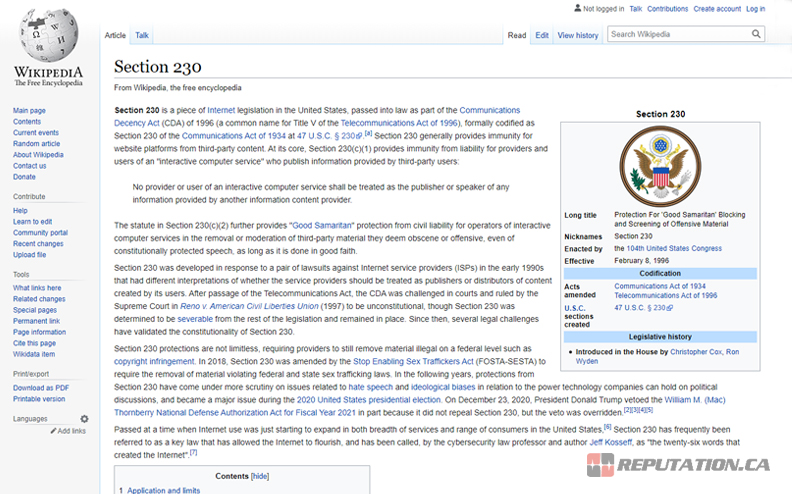
In particular, this issue came up during 2020 as Donald Trump attempted to have it overturned, so he could sue Twitter to stop it from publishing insulting content about him. His motions haven’t gone anywhere as of yet, but it’s a complicated situation. As communications online change, and as lawmakers gain a better understanding of how online platforms work, changes to the law are inevitable. It remains to be seen how they will be changed.
While we’re a site based in Canada, and this is U.S. law, it’s relevant because The Dirty is based in Arizona and is subject to U.S. laws and legal proceedings.
How to Get a Post Removed from The Dirty
Getting a post removed from The Dirty involves following a particular legal process. Here’s a step-by-step guide.
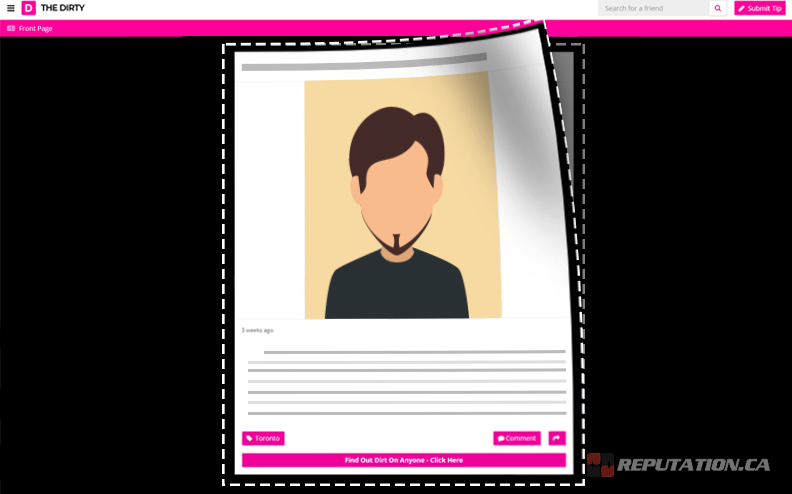
Identify if the post violates the terms of service. The first thing you can do is check to see if the post violates the terms of service of The Dirty. This is relatively easy because the terms of service are very lax and only ban what is legally banned across the continent. Unfortunately, very little of the content published on their site violates those terms, so you likely won’t be able to get a simple removal here. Even if you do, often the post is edited to remove that piece of content, but keep the rest of the entry.
Identify if the post contains slanderous material. Content online can generally only be removed if it’s actually slanderous (or, more specifically, libelous), which has a particular legal definition. The exact boundaries of what is and isn’t libel are constantly moving as more precedent is set by court cases. Generally, if the information is presented as fact and can be proved incorrect, it can be pursued as libel. If it’s presented as opinion or is unprovable, the court case gets much harder. You may still be able to argue for the removal of the content, but it may be more difficult and require a lengthier legal battle. This step often requires consulting with a lawyer, to determine whether or not your case has legs.
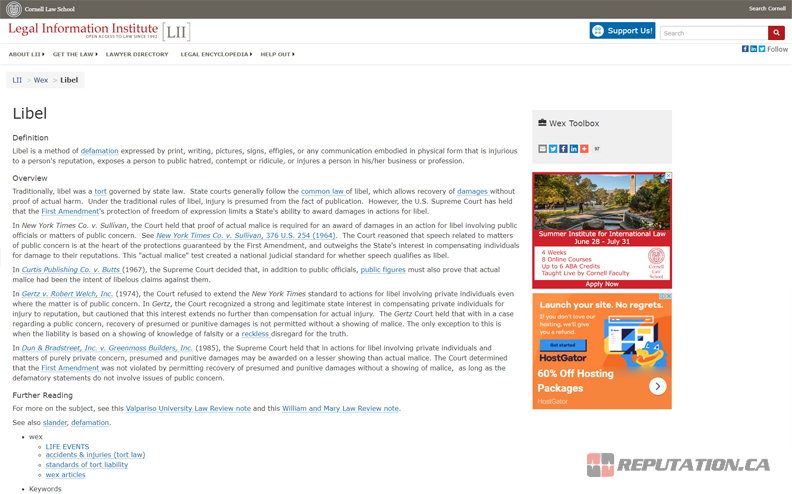
Get a subpoena to reveal the identity of the submitter. If your case is determined to be viable, you can get a subpoena to identify the information of the submitter. You will need to start a John Doe Lawsuit against an unidentified defendant and get a subpoena issued to identify them. This legal message is sent to The Dirty and requires them to provide the name, IP address, and identifying information they have of the person who submitted the content. This is where many cases fall apart if the IP address is a VPN endpoint or other untraceable source, the name is fake, and the original submitter impossible to find. There are tools you can use to identify the original poster even with some protections, but it can be very difficult.
Submit a defamation suit against the submitter. Once you know who you’re targeting, you can file a defamation lawsuit. This is a complicated legal proceeding and should be left to lawyers to handle on your behalf. Please be cautious with legal advice given on the internet.
Finally, be very cautious with attempting to send a cease and desist, DMCA, or other kinds of legal threat letters to The Dirty prior to pursuing the above process. Not only will they ignore it; often, they will blacklist you such that they will fight harder against your attempts to remove the content, which makes it more difficult, time-consuming, and expensive to have the content removed.
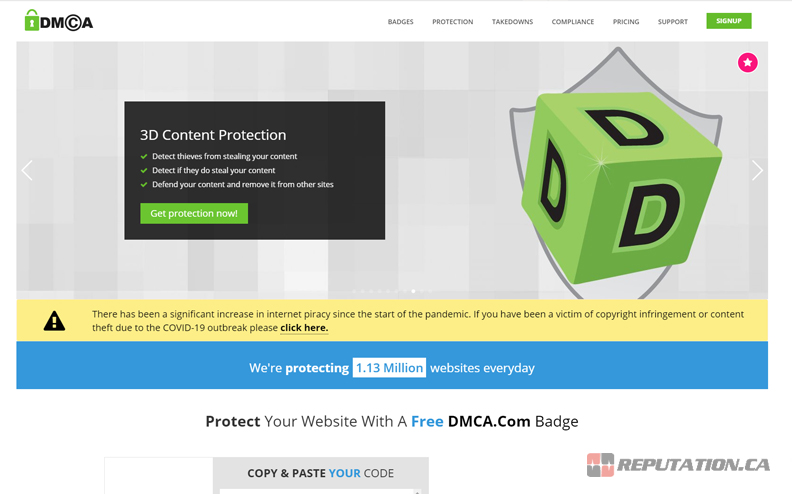
The DMCA may be useful for getting some content removed, specifically images of you that you hold the copyright to, but you may need to prove that you own the copyright. You may also be able to argue that the image is used in violation of the terms of the site it was taken from, such as Facebook, though this is also a complicated process. In both cases, these are likely to result in the removal of the image, but not the content of the post.
Keep in mind, as well, that sometimes content can be protected under fair use, and it can occasionally be difficult to prove copyright ownership. There are a lot of loopholes, hurdles, and hoops to jump through when you’re dealing with something as tricky as an online reputation.
Other Alternatives
There are a few options you might consider to get content on The Dirty removed from the public eye, even if it doesn’t remove it from the site itself.
One thing to keep in mind is that many of the processes used to remove negative content online come with a cost. It can be expensive to get negative search results removed. Google doesn’t charge for their process of removals, but hiring a lawyer or a reputation management firm to get content removed from the original publication can be costly.
While this price tag may seem daunting, you must remember the cost of leaving that content online. The hit to your reputation can cost you opportunities, jobs, and relationships, and this can all lead to untold negative repercussions. The price of removal is relatively small in comparison.
Get content removed from Google. Google is willing to remove search results from their index when they violate specific terms. In large part, those terms are similar to laws about protected information, but they are slightly laxer than a site like The Dirty would like you to believe. Google actually has several different processes you can use to get content removed from their index, which you can read about here.

Google.com and Google.ca have different modes of operation but share the same internal processes. We specialize in Google.ca, as a Canadian firm, so if you’re primarily worried about the Canadian version of the search results, feel free to contact us.
Pursue a Cyber Libel suit. A cyber libel suit is a specific kind of libel lawsuit specializing in online content. There are many lawyers who specialize in this type of law who can help you. Be aware, though, that this process can be expensive and time-consuming, and it’s not always going to work, depending on whether or not the content in question can be determined to be actually libelous or just insulting.
Additionally, while you may be able to get a court order to get content removed, it’s always possible that the site will reject the court order and fight it. This can lead to a lengthy legal battle. If you win, you may be entitled to damages which can recoup your losses on court fees and lawyer costs, but if you lose, you’re in a worse place than when you started. Always consult with a reputable lawyer before pursuing any sort of legal action, particularly in a situation as tenuous as this.
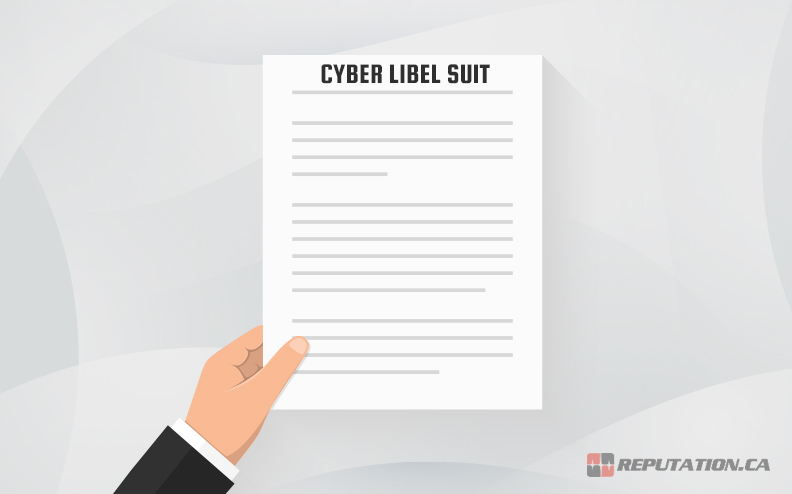
Hire a reputation management company. If you don’t want to pursue a cyber libel suit, we can offer an alternative.
The trouble with getting content removed from a site like The Dirty is three-fold.
- The site is going to resist all attempts to get the content removed, making it a long, tedious, and expensive process.
- Other sites, potentially dozens or hundreds, might have scraped and published the content as well; you would have to get the content removed from them as well.
- Record of your removals can be nearly as damaging as the content itself and can present a different problem.
Reputation management can help. Reputation management is about more than just removing the original content through legal proceedings. We can help with a variety of reputation issues. In some cases, the original content can be removed. Scrapers can be suppressed, and listings can be removed from Google search results.
Perhaps the most important part of reputation management is not the removal of negative results, but the publication and proliferation of positive results. Most people who use Google rarely dig past the first or second page of results, so anything that is much further down may as well not exist. Sure, the information might still be out there, but it can be discredited and outweighed by positive information and personal brand management.
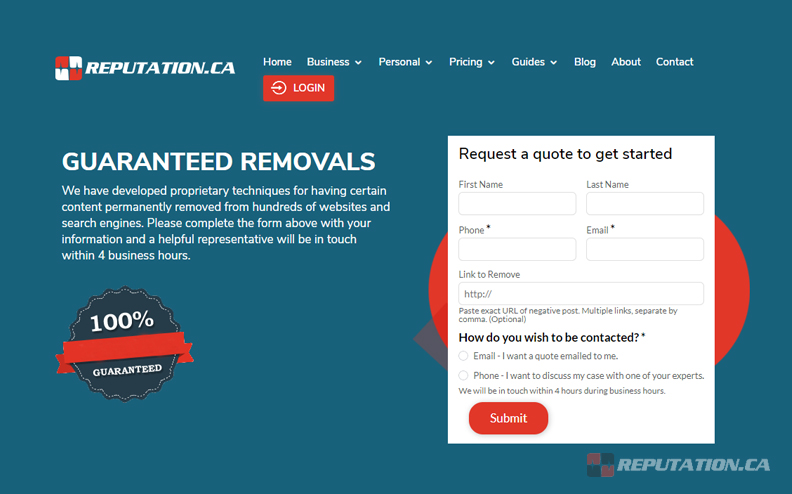
Our services come in a variety of forms. We can offer guaranteed removals from sites like The Dirty (and will not promise we can when we can’t). We have established processes that can help you get negative content removed from a variety of sites, and then replace search results with positive content to manage your personal reputation online.
If you find yourself in the troubled position of dealing with negative posts on sites like The Dirty, you have a few options available to you. We recommend reaching out for a quote and discussion, so we can help you put your fears to rest.
